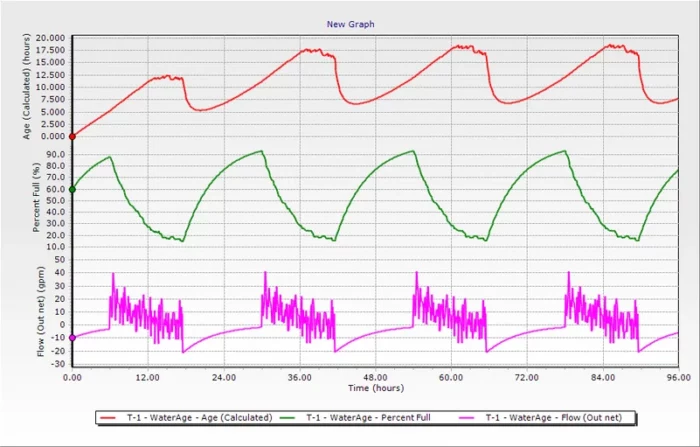In the past, it was felt that if a water utility delivered good quality water with adequate pressure to the customers’ meters, it was doing a good job. However, in recent years, many are saying such indicators aren’t sufficient. Examples such as Legionnaires disease, loss of disinfectant residual, color, taste and odor problems, and lead in water showed that providing good water in the water main did not necessarily mean that the water at the tap was good.
Pressure and water quality could deteriorate in the customer’s plumbing system. The problem has become more acute with regard to the COVID-19 crisis in that many buildings such as schools, hotels and offices have been shut down for extended periods and need to be brought back online. But the quality of water in the pipes is poor. Modeling can help plan flushing the system.The general name given to analyzing this type of analysis is “premise plumbing modeling”. ASCE has a committee devoted to premise plumbing modeling and AWWA has a more general committee on premise plumbing.
Water distribution models, like WaterGEMS and WaterCAD, can do the calculations of pressure and can also determine water quality provided the user has the right coefficients to describe the underlying processes. The challenge in using these models is that water distribution system models are viewed on the computer screen as two-dimensional drawings and a two-dimensional plan view of a multi-story building isn’t particularly easy to view.
How can you use a model like WaterGEMS to model a multi-story building today? One approach to resolving this problem is to break out each floor separately and accurately in plan view and connect each floor to the building’s riser pipe (in red below) which is not displayed to scale. An example for a three-story building with each floor laid outside by side shows how this can be done.
Pressures, Flow and Water Quality
With such a model it is possible to dynamically calculate such properties as pressures and flows. The graph below shows how pressures can fluctuate over the course of three days on different floors of a building. The red line shows reasonable pressure at the bottom floor but only marginally acceptable pressure (green line) at the top floor.
Some buildings have rooftop or other in-building tanks which serve to provide reliability and pressure equalization during the day. These tanks, however, increase water age and the accompanying disinfectant decay. This can be modeled showing different parameters associated with the tank. For example, during the night the tank fills and water age increases due to lack of use while during the day water age drops and disinfectant residual stays high. The first person to open a tap in the morning gets the oldest water.
Modeling can help building operators better understand the behavior of their systems and improve system performance. I see this as a topic that will come up more frequently in the future. Is anyone out there working on this type of problem today? If you are, I’d like to hear about the nature of the work you’re doing.
If you want to look up past blogs, go to https://blog.bentley.com/category/hydraulics-and-hydrology/. And if you want to contact me (Tom), you can email tom.walski@bentley.com.
Want to learn more from our resident water and wastewater expert?
Join the Dr. Tom Walski Newsletter today!













